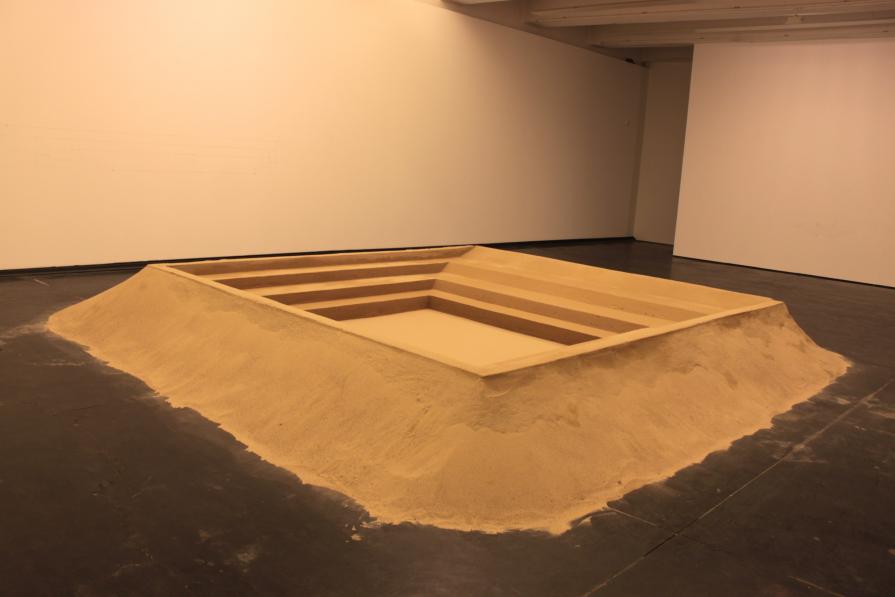What the barbarians did not do, did the Barberini, 2012- Museo Macro Rome.
Bronze is a metal used for both art and war, linking therefore the fields of visual representation and military execution of power. Previously, as in the seventh century, decorative elements such as stars or rosettes from the Pantheon’s dome were taken to Constantinople by its emperor Constans II.
These stories, belonging to different times and locations, are connected through the work to the foundry in the outskirts of As Sulaimanyah, where the local businessman Nazhad melts and casts metal obtained from the battlefields of the Iraq-Iran War, Gulf Wars and, recently, Syria’s Arab Spring. The methods of casting are executed in sand moulds and the casting forms pressed in sand bring similar formal references. The coffers of Pantheon’s concrete ceiling and its form resemble foundry-type molds.
The sand sculpture presented here is made through a similar molding technique to create the mockup for a Pantheon’s dome unit whilst photos and purposely-raw video material from Nazhad’s foundry allow us to follow melting and casting processes.
Important part of the project was guessing and immersion to the object of study. The artist calculated the angles using a basic equipment of nails and threads as historically builders used to and the traces of this process can be seen on the walls. The outcome became the basis for making the mold to press the sand in order to receive the shape of the sculpture resembling casting forms.
Written with Aneta Szylak
Special thanks to MACRO, Fabio Arrabito (Me), Alessio Fransoni & Ilari valbonesi







Comments 0
Say something